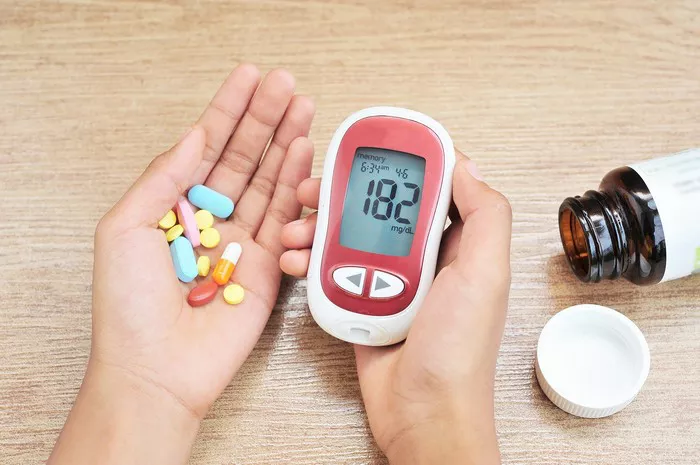Insulin resistance is a condition in which the body’s cells become less responsive to the hormone insulin, leading to elevated blood glucose levels. This phenomenon is central to the development of type 2 diabetes and is also closely associated with other metabolic conditions such as obesity, cardiovascular disease, and metabolic syndrome. Understanding what creates insulin resistance is key to preventing, managing, and potentially reversing the condition. In this article, we will delve into the various factors that contribute to insulin resistance, including genetic, environmental, and lifestyle-related elements.
What Is Insulin Resistance?
Insulin is a hormone produced by the pancreas that allows the body’s cells to absorb glucose from the bloodstream to be used as energy. In a healthy individual, insulin binds to receptors on the surface of cells, triggering the uptake of glucose. However, in someone with insulin resistance, the cells do not respond properly to insulin, requiring the pancreas to produce more insulin to achieve the same effect. Over time, this increased demand can lead to pancreatic exhaustion, higher levels of insulin in the blood (hyperinsulinemia), and eventually, type 2 diabetes when the pancreas can no longer keep up with the body’s needs.
Insulin resistance is not a singular condition but rather a spectrum, where individuals may exhibit varying degrees of resistance. Early-stage insulin resistance may present with few symptoms, but as the condition progresses, it can contribute to the onset of type 2 diabetes, fatty liver disease, and cardiovascular complications.
Causes of Insulin Resistance
Insulin resistance is caused by a complex interplay of factors that range from genetics to lifestyle choices. These causes can be grouped into several categories:
1. Genetic Predisposition
One of the primary drivers of insulin resistance is genetic susceptibility. Research has shown that certain genetic mutations and family history can increase an individual’s risk of developing insulin resistance and type 2 diabetes. While no single gene is responsible for the condition, multiple genes that regulate insulin sensitivity, glucose metabolism, and fat storage can contribute to an individual’s susceptibility.
For example, variants in the genes encoding proteins involved in insulin signaling pathways, such as the insulin receptor substrate (IRS) proteins and glucose transporter type 4 (GLUT4), have been linked to insulin resistance. Individuals with a family history of type 2 diabetes are more likely to inherit these genetic variants, putting them at greater risk of developing insulin resistance, especially when combined with other risk factors.
2. Obesity and Excess Body Fat
Obesity, particularly visceral or abdominal obesity, is one of the strongest modifiable risk factors for insulin resistance. Excess body fat, especially fat stored around the abdomen and internal organs, plays a crucial role in disrupting insulin sensitivity. Adipose tissue (fat tissue) is not just an inert storage site for fat; it is an active endocrine organ that releases hormones and inflammatory molecules known as adipokines.
In individuals with obesity, adipose tissue releases higher levels of pro-inflammatory adipokines, such as tumor necrosis factor-alpha (TNF-α) and interleukin-6 (IL-6). These molecules can interfere with insulin signaling pathways in muscle, liver, and fat cells, leading to reduced insulin sensitivity. Additionally, excessive fat accumulation can lead to ectopic fat deposition, where fat is stored in non-adipose tissues, such as the liver and muscles, further exacerbating insulin resistance.
3. Inflammation
Chronic low-grade inflammation is a key contributor to the development of insulin resistance. This inflammation is often driven by excess fat accumulation and the release of pro-inflammatory cytokines from adipose tissue. These cytokines can impair insulin signaling by activating pathways that interfere with the normal function of insulin receptors on cells.
In addition to adipose tissue, other factors, such as infections, autoimmune conditions, or environmental toxins, can also trigger systemic inflammation, further contributing to insulin resistance. The link between inflammation and insulin resistance highlights the importance of reducing chronic inflammation through lifestyle interventions, such as weight loss, diet changes, and physical activity.
4. Physical Inactivity
A sedentary lifestyle is strongly associated with insulin resistance. Physical activity plays a critical role in maintaining insulin sensitivity by promoting glucose uptake in muscle cells and improving the efficiency of insulin signaling. Exercise increases the translocation of GLUT4 to the cell membrane, allowing for more efficient glucose uptake by muscle cells, independent of insulin.
In contrast, physical inactivity can lead to decreased muscle mass and reduced mitochondrial function, impairing the body’s ability to utilize glucose effectively. Over time, this can result in an accumulation of glucose in the bloodstream, leading to elevated insulin levels and insulin resistance.
Engaging in regular physical activity, particularly aerobic exercise and strength training, can improve insulin sensitivity and reduce the risk of insulin resistance. Even modest increases in activity levels have been shown to have significant benefits for glucose metabolism.
5. Diet and Nutrition
Diet plays a significant role in the development of insulin resistance. Diets high in refined carbohydrates, added sugars, and unhealthy fats are particularly detrimental to insulin sensitivity. These dietary factors can lead to excessive weight gain, chronic inflammation, and metabolic dysregulation, all of which contribute to insulin resistance.
High-Carbohydrate Diets and Sugar
Consuming large amounts of refined carbohydrates, such as white bread, pasta, and sugary snacks, can cause rapid spikes in blood glucose levels, leading to increased insulin production. Over time, repeated exposure to high levels of insulin can desensitize cells to the hormone, contributing to insulin resistance. In particular, the overconsumption of fructose, often found in sugary beverages and processed foods, has been linked to increased fat accumulation in the liver and the development of non-alcoholic fatty liver disease (NAFLD), which is closely associated with insulin resistance.
High-Fat Diets
Diets high in unhealthy fats, particularly trans fats and saturated fats, can also contribute to insulin resistance. These fats can increase inflammation, disrupt cell membrane function, and lead to the accumulation of lipids in non-adipose tissues, impairing insulin signaling. On the other hand, diets rich in healthy fats, such as omega-3 fatty acids found in fish, nuts, and seeds, have been shown to improve insulin sensitivity by reducing inflammation and promoting healthy cell function.
6. Sleep Deprivation and Stress
Chronic sleep deprivation and stress are two often-overlooked contributors to insulin resistance. Both of these factors can disrupt the body’s hormonal balance and increase the production of stress hormones such as cortisol.
Sleep Deprivation
Sleep is crucial for maintaining metabolic health. Studies have shown that even short-term sleep deprivation can lead to a decrease in insulin sensitivity. This effect is likely due to disruptions in the body’s circadian rhythm, which regulates insulin release and glucose metabolism. Chronic sleep deprivation has also been linked to weight gain and obesity, further exacerbating the risk of insulin resistance.
Stress
Chronic stress triggers the release of cortisol, a hormone that increases blood sugar levels by promoting glucose production in the liver. Over time, elevated cortisol levels can lead to insulin resistance, as the body becomes less responsive to insulin’s effects. Managing stress through techniques such as mindfulness, meditation, and exercise can help reduce the risk of insulin resistance.
7. Hormonal Imbalances
Hormonal imbalances can also contribute to insulin resistance, particularly in conditions such as polycystic ovary syndrome (PCOS) and Cushing’s syndrome.
PCOS
PCOS is a common endocrine disorder in women that is characterized by insulin resistance, irregular menstrual cycles, and elevated androgen levels. Women with PCOS often have higher levels of insulin in their blood, which contributes to the development of insulin resistance. Managing insulin resistance in PCOS is important for reducing the risk of type 2 diabetes and improving reproductive health.
Cushing’s Syndrome
Cushing’s syndrome is a condition in which the body produces too much cortisol, often due to a tumor in the adrenal glands or prolonged use of corticosteroid medications. The excess cortisol can lead to insulin resistance by promoting glucose production in the liver and impairing insulin signaling.
8. Medications
Certain medications can also contribute to the development of insulin resistance. Corticosteroids, used to treat inflammatory conditions, can raise blood sugar levels and increase the risk of insulin resistance. Other medications, such as antipsychotics and some antihypertensives, have been linked to weight gain and metabolic changes that may promote insulin resistance.
Mechanisms of Insulin Resistance
At the cellular level, insulin resistance occurs when insulin signaling pathways are disrupted. Normally, when insulin binds to its receptor on the surface of a cell, it triggers a cascade of events that lead to the uptake of glucose. In insulin resistance, this signaling pathway is impaired, often due to a buildup of lipids in muscle and liver cells or inflammation that interferes with insulin receptor function.
The key mechanisms involved in insulin resistance include:
Impaired Insulin Receptor Signaling: Inflammation and excess lipids can interfere with the function of insulin receptors, reducing their ability to transmit signals that promote glucose uptake.
Lipid Accumulation: Excessive fat storage in non-adipose tissues, such as the liver and muscles, can disrupt the function of mitochondria and impair glucose metabolism.
Mitochondrial Dysfunction: Mitochondria are responsible for energy production in cells. When they are dysfunctional, cells may become less efficient at metabolizing glucose, contributing to insulin resistance.
Chronic Inflammation: Inflammation can activate pathways that inhibit insulin signaling, leading to a reduced response to insulin.
See also: What Does Insulin Resistance Do To Your Body
Conclusion
Insulin resistance is a multifactorial condition influenced by genetics, lifestyle, diet, and environmental factors. While some causes, such as genetic predisposition and hormonal imbalances, are beyond individual control, many others, such as obesity, diet, physical activity, and stress, can be modified to reduce the risk of developing insulin resistance. By addressing these modifiable factors through lifestyle changes, individuals can improve insulin sensitivity, reduce the risk of type 2 diabetes, and promote overall metabolic health.
Understanding what creates insulin resistance is essential for preventing and managing the condition. Through a combination of lifestyle interventions, proper medical management, and a deeper understanding of the underlying mechanisms, it is possible to mitigate the effects of insulin resistance and improve long-term health outcomes.
Related topics:
What is the Normal Range for Insulin Resistance?



























